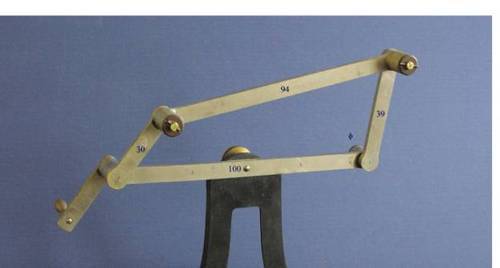A mechanism is one in which one of the links of a kinematic chain is fixed. Different mechanisms can be obtained by fixing different links of the same kinematic chain. These are called as inversions of the mechanism.
Inversions of Four Bar Chain

One of the most useful and most common mechanisms is the four-bar linkage. In this mechanism, the link which can make complete rotation is known as crank (link 2). The link which oscillates is known as rocker or lever (link 4). And the link connecting these two is known as coupler (link 3). Link 1 is the frame.
Inversions:

Fig.1.23 Inversions of four bar chain.
Crank-rocker mechanism: In this mechanism, either link 1 or link 3 is fixed. Link 2(crank) rotates completely and link 4 (rocker) oscillates. It is similar to (a) or (b) of fig.1.23.

Fig.1.24
Double crank mechanism (Coupling rod of locomotive). This is one type of drag linkmechanism, where, links 1& 3 are equal and parallel and links 2 & 4 are equal and parallel.
The mechanism of a coupling rod of a locomotive (also known as double crank mechanism) which consists of four links in the fig. in this mechanism, the links AD and BC (having equal length) act as cranks and are connected to the respective wheels. Thelink CD acts as a coupling rod and the link AB is fixed in order to maintain a constant centre to centre distance between them. This mechanism is meant for transmitting rotary motion from one wheel to the other wheel.

Fig.1.25
Double rocker mechanism. In this mechanism, link 4 is fixed. Link 2 makes completerotation, whereas links 3 & 4 oscillate


